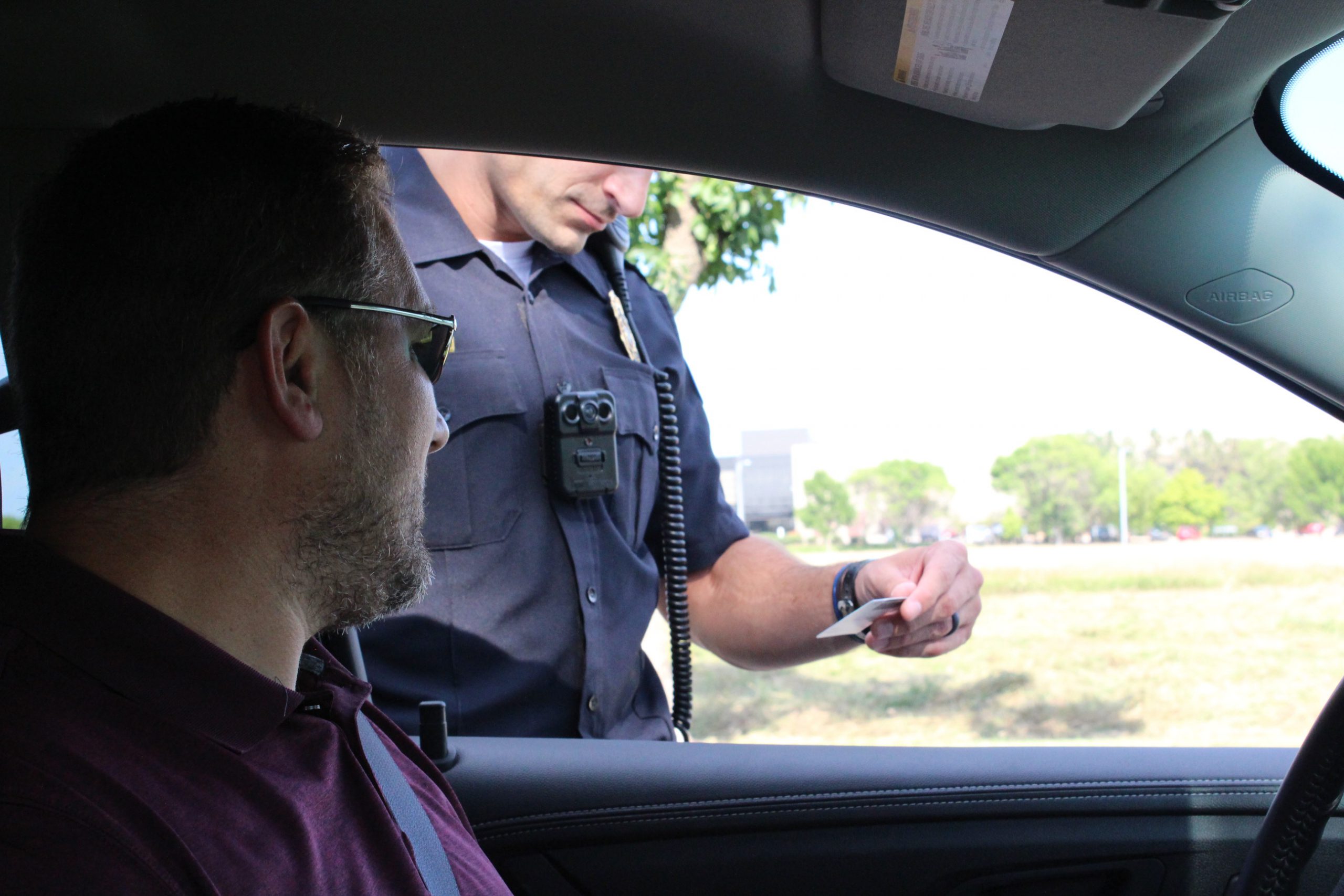Given that, by 2035, there are expected to be 4.5 million self-driving cars moving around US streets,they will have a tremendous impact on police forces.
As this technology becomes more popular, law enforcement agencies are facing new challenges, from ticketing to how to interact with them.
traffic enforcement

The most common contact that people have with law enforcement are during traffic stops, but what happens when an officer wants to pull over an autonomous vehicle that has no human driver?
Last year, in San Francisco, an autonomous car got the first-ever traffic ticket when a GM Cruise was pulled over for not yielding to a pedestrian in a crosswalk. The person in the crosswalk was not injured, but the San Francisco Police Department spokesperson, Officer Giselle Linnane, stated that the car “cut the pedestrian off.” The traffic officer believed that the car was in self-driving mode, however, the person inside was cited. “The individual, whether they were driving or not, is still responsible for the vehicle,” Linnane said.
Cruise, the manufacturer of the autonomous vehicle, reportedly believes that there were no laws broken. Data from the company showed that the car was 10.8 feet away from the pedestrian. Although Linnane stated: “We don’t look at or work with that data…It’s whatever the officer observed at the scene and from his observation, there was a violation.”
As reported by CBS, Kevin O’Connor, a witness of the incident, took a photo when he saw the officer pull over the self-driving car. “There was another car stopped alongside and he looked a little befuddled,” said O’Connor. “The cop was just writing a regular ticket like they always do.”
This isn’t the first autonomous car to allegedly violate traffic laws. Recently, it was reported that some Uber test vehicles had been recorded running red lights and violating bike lane rules while testing in San Francisco but no citations were issued.
Police Interaction with Autonomous Cars
As self-driving technology continues to evolve, they are also becoming more cooperative with law enforcement. The latest example is Waymo’s self-driving Chrysler Pacifica, which has successfully navigated an intersection with a broken stoplight and followed police hand instructions.
In the above dashcam video released by the company, the vehicle stops at the intersection, waits for the traffic and a left-turning car coming from the opposite direction, and then proceeds once the officer had provided the hand signal to move.
The car is also designed to cooperate with patrol vehicles. The recently updated Waymo “Emergency Response Guide,” provides a protocol that may offer some glimpse of what tech advancements the minivan will have: “The Waymo vehicle uses its sensors to identify police or emergency vehicles by detecting their appearance, their sirens, and their emergency lights,” the guide says. “… If a Waymo fully self-driving vehicle detects that police or emergency vehicle is behind it and flashing its lights, the Waymo vehicle is designed to pull over and stop when it finds a safe place to do so.”
According to the guide, when Waymo is stopped by a police officer, the vehicle can unlock its doors and roll down its windows, allowing someone from the company’s support team to communicate with law enforcement. If the minivan has passengers inside, Waymo’s “Rider Support Specialists” can communicate with them via speakers, displays and “in-vehicle telecommunications.”
And if you’re interested in what it looks like to drive behind a self-driving car, here you go:
A Futuristic and Unconventional Approach
If an autonomous car is stolen, could officers remotely lock the criminals inside the vehicle and drive them to the nearest police station? Law enforcement in the Netherlands believes that this is possible and are currently making tests to prove it.
“We wanted to know if we can make the vehicles stop or drive them to certain locations…And the result is: yes, we probably can,” said Chief Innovation Officer, Hans Schönfeld. “The police tested several cars; Tesla, Audi, Mercedes, and Toyota,” he continued. “We do this in collaboration with these car companies because this information is valuable to them, too. If we can hack into their cars, others can as well.”
Police cars may also be obtaining a driverless update. In 2016, car-maker Ford filed a patent for driverless law enforcement cars that can find hiding spots, catch lawbreakers and even give out tickets. Motorola has also filed a patent, this time to handle the entire process of a detainee. Despite the technology not being in use yet, car companies are definitely anticipating a self-driving future of patrol vehicles.
“This is something we need to start thinking about,” says Schönfeld. “Should we start planning for connected and self-driving police cars? When do we need them?”

